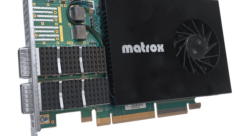 Traditional broadcasting no longer owns the reigns on visual storytelling, and corporate entities of all types are taking notice. From traditional corporate office spaces to education, faith-based, sports, medical and government clients, there is an increased demand to add live and pre-recorded video as a communications and informational tool. This translates to a greater need for efficient AV integration.
Traditional broadcasting no longer owns the reigns on visual storytelling, and corporate entities of all types are taking notice. From traditional corporate office spaces to education, faith-based, sports, medical and government clients, there is an increased demand to add live and pre-recorded video as a communications and informational tool. This translates to a greater need for efficient AV integration.
Even if a client isn’t aware of how accessible video production and delivery has become, it is likely they are seeking new capabilities for their communications, messaging, training, information, or marketing departments.
Either way, if a contractor can integrate a greater level of production-quality video as part of their toolkit, they are setting themselves up for success by rapidly responding to the shifting needs of today’s enterprises.
The Great Enabler
More importantly, in the past year the AV and broadcast industries have each seen an inflection point in the adoption of a great democratizer in live video: the shift of the media infrastructure to IT networks.
There are many reasons why this move is beneficial. It lowers costs by reducing – or eliminating – traditional audio and SDI video cabling. It decreases complexity by leveraging established IT and IP standards. It even increases creativity by allowing for atypical video sources and camera placements, and production locations.
But the greatest benefit for facilities of all types is that nearly every structure is already wired for at least 1Gb Ethernet.
Consider that fact for a moment. The days of costly studio builds are gone as nearly every facility has the infrastructure for live video built-in. And this is the same infrastructure being adopted by video-first companies and broadcasters today! Because of this, the on-ramp to live video is greatly reduced for both the integrator and the end-user.
How to Leverage Your Existing Infrastructure
With the right IP approach, media devices can freely interoperate with one another. The goal is to seek out suppliers of media components that are utilizing these industry standards to build out an end-to-end, all-IP video system.
Key Components of Your System:
- Cameras: The most common capture point will be cameras. These can be both IP-native cameras from major brands – such as Sony and Panasonic – or traditional SDI and HDMI cameras that utilize an IP convertor.
- “Atypical” video sources: This is an encompassing idea to account for uncommon inputs that are challenging in traditional workflows, but work easily with IP workflows. Computer interfaces, for example, aren’t traditionally thought of as common video sources – but for training or human resources this can be a game-changer. Ensure the IP standard being used has software applications to support such capabilities.
- Live production systems: Today, the “production system in-a-box” model is truly plug-and-play! A live production system provides video switching, effects, graphics overlay, audio mixing, PTZ camera control, and – if desired – live streaming to websites and social media platforms.
The Next Discussion
There is no doubt the demand for video production and distribution integration is on the rise. Thus, the ability to provide these capabilities are swiftly becoming too critical to ignore! In the next discussion, a look at the tools and systems available to help new users ramp up a video operation once the technology is in place will be examined – and how the integrator can set those systems up to ensure success!










